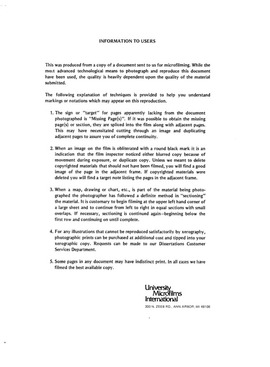| dc.contributor.author | Kang, Joo-myung, | en_US |
| dc.date.accessioned | 2013-08-16T12:28:27Z | |
| dc.date.available | 2013-08-16T12:28:27Z | |
| dc.date.issued | 1981 | en_US |
| dc.identifier.uri | https://hdl.handle.net/11244/4930 | |
| dc.description.abstract | The conductive moving boundary model developed in this study indicates that the solidification of magma takes more time when the latent heat of fusion is considered. The convective moving boundary model shows that the temperature gradients in the upper portion of the magma are more steep than those in the lower by transporting the heat at the bottom upward. | en_US |
| dc.description.abstract | In this study problems of heat and mass transfer in a geothermal reservoir are solved numerically by the finite element analysis for development of geothermal exploration. The problems under investigation are unsteady free convection within a magma body and a two phase Stefan problem associated with moving boundaries. These geological phenomena require a large amount of computer storage as a result of the need to provide increased resolution near a small interesting area of the huge domain. Thus, a consideration to reduce the number of unknown variables is necessary; the penalty method of finite element analysis is employed to solve the time dependent free convection problem. The purpose of the unsteady free convection model is to investigate the effect of convection on the temperature and streamline distribution within a geothermal reservoir (magma body). The one dimensional, two phase Stefan formulation, which has dependent melting temperature on depth, is developed by the finite element method after using the Duvaut's transformation to resolve the discontinuity of the temperature gradient on the solid-liquid interface. This model is used to investigate the effect of the latent heat of fusion on the solidification of magma. | en_US |
| dc.description.abstract | In a time dependent free convection model, convection is generated by density changes due to temperature variations. The results of this study show that the convection gives larger temperature gradients at the upper portion of the magma than the lower portion. Consequently, the heat transported from the bottom of the magma by convection prevents the roof of the magma body from freezing, or slows the freezing process at the upper portion of the magma, until almost all of the lower portion of the magma is frozen. | en_US |
| dc.format.extent | x, 113 leaves : | en_US |
| dc.subject | Geophysics. | en_US |
| dc.title | Finite element analysis of the heat and mass transfer in a magma body. | en_US |
| dc.type | Thesis | en_US |
| dc.thesis.degree | Ph.D. | en_US |
| dc.thesis.degreeDiscipline | Mewbourne School of Petroleum and Geological Engineering | en_US |
| dc.note | Source: Dissertation Abstracts International, Volume: 42-11, Section: B, page: 4336. | en_US |
| ou.identifier | (UMI)AAI8209428 | en_US |
| ou.group | Mewbourne College of Earth and Energy::Mewbourne School of Petroleum and Geological Engineering | |
